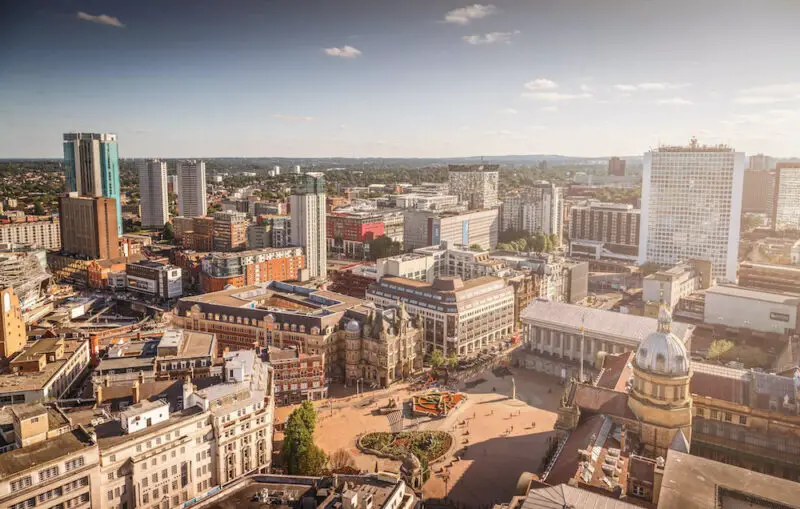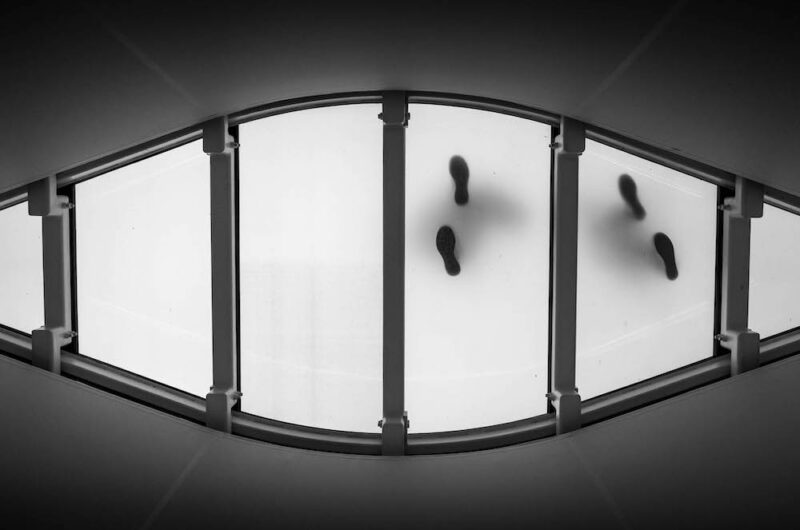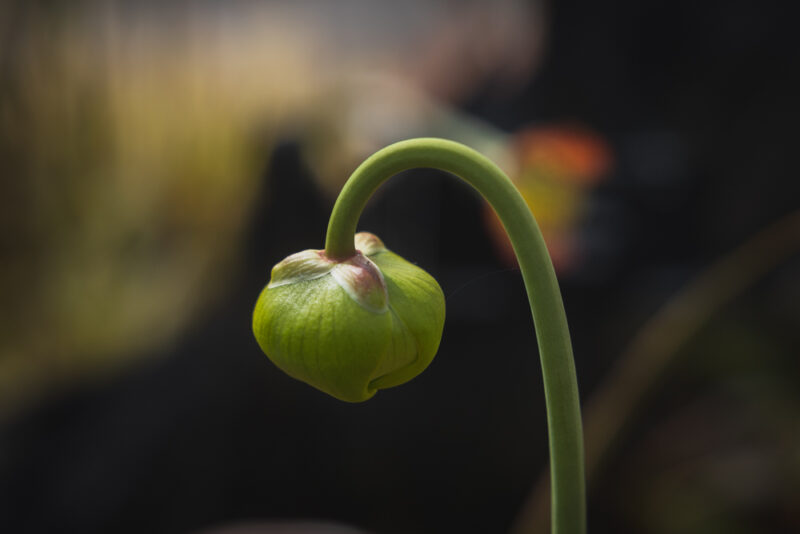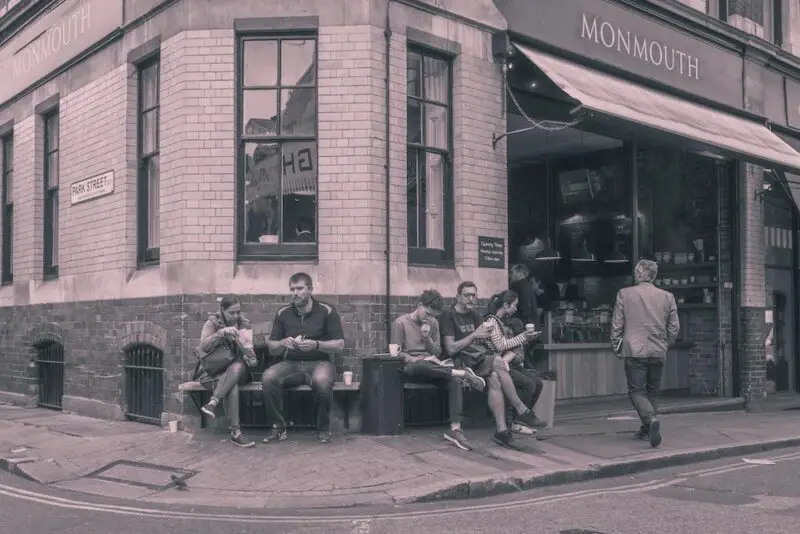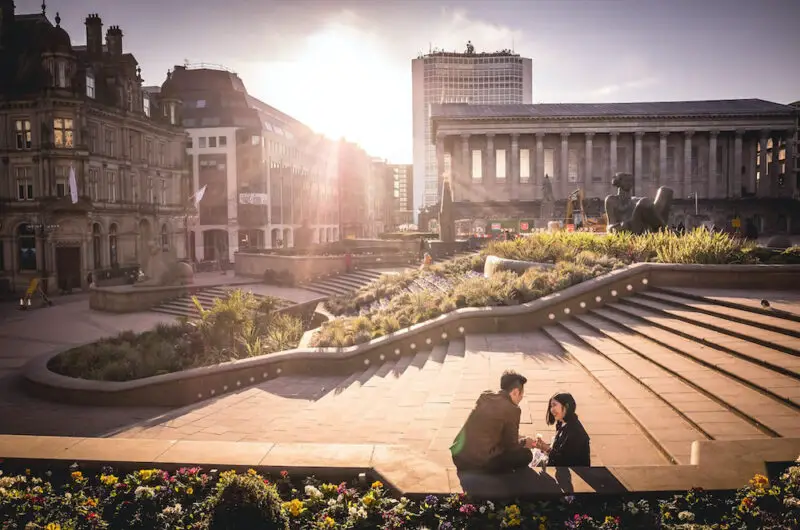If you want to know how to take aesthetic pictures, you first need to know what aesthetic photography is. So, did you ever find yourself drawn to a specific photograph in a photo gallery? Can you say why you feel drawn to that photograph? How would you define an aesthetic photograph?
The creation of an aesthetically pleasing picture involves many techniques used by photographers. The techniques photographers usually use for aesthetic photos are composition, symmetry, and balance. Leading lines are incorporated into their designs to direct the viewer’s attention, and their images have a harmony created through colors.
There is a strong focus on aesthetics in both portrait and landscape photography. In fine art photography, aesthetic image-making plays a crucial role. Aesthetic photographs can also be used to tell stories and construct worlds in fantasy photography.
In this article, I will help you learn about aesthetic photography and how to take aesthetic pictures. Moreover, I will guide you through the required techniques for aesthetic photography so that you can practice them and put them to good use.
What Is Aesthetic Photography?
In aesthetic photography, visual beauty appears in an image by capturing its aesthetic qualities as a result of the photographer’s hand. Aesthetics define something that is instantly pleasing to the eye.
There are a large number of different aspects to creating visually pleasing photos, including color, composition, lighting, subject matter, and subject matter. The goal of aesthetic photos is to make them aesthetically pleasing.
The concept of aesthetics in photography refers to a photographer’s use of visual elements in order to create beautiful images. Now you’re wondering what those elements are? There are several factors to consider, such as frame composition, color schemes, lighting techniques, and subjects.
Aesthetics Vs Style
Often people confuse aesthetics with style, but you need to be careful and separate those two and know the differences. They both are important in photography, but they are two separate things.
In photography, style refers to the way the photographer works. Specifically, it refers to their equipment and how they work. But, they use aesthetics to create their photos.
Photography aesthetics refers to an artist’s aesthetic style as well. It is important to distinguish between a photographer’s style and aesthetic. The equipment and techniques they use to create their aesthetic pictures. Photographers with strong aesthetics will be able to differentiate their photographs from those of others.
Aesthetic Photography Tips
The definition of beauty varies from person to person. There is no universal agreement about what makes a photograph beautiful, so it’s nearly impossible for people to agree. A quick look through any social media will reveal some beautiful aesthetic pictures.
Although earlier blogs and platforms like Tumblr began the trend of aesthetic pictures, social media platforms have elevated this form of photography like nothing else. The aesthetics of a photo are what draw your eye.
Having the right composition is the key to making your photos more attractive to the viewer. Everything you have learned before, or you’ve heard before, like the Rule of Thirds, and the Golden Spiral, using leading lines, composition and symmetry should be applied here in order for you to create an aesthetic photograph.
How can you make the scene as breathtaking as possible? Don’t just ask how you can get a great shot, but ask yourself how you can make the scene stand out.
When beauty is the goal, creativity has far more room to flourish. There should be no limit to your creativity, so let’s discuss the tips and tricks on how to take aesthetic pictures.
1. Use Composition For Better Aesthetic Pictures
You can create beautiful images through composition. In photography and aesthetics, composition plays an important role. Photographers should carefully consider how they arrange the scene and subject in front of them in order to create aesthetically pleasing pictures.
Composition is essential, regardless of how you intend to use your image or where it will be published. Rather than just capturing a viewer’s attention, the image should draw them in and entice them to explore. There should be no confusion or loss of direction while they explore.
So, if you go with simple but strong composition and if you keep an eye on the details, you will be able to take stunning aesthetic pictures. Avoid overwhelming your images with too much detail or distractions because a busy image is everything but aesthetic.
For the viewer to see the picture as a whole, the composition must be simple, yet strong. Aesthetic pictures are simple, not a collection of things. It is a piece of art that fits together as a whole. So, it is the simplicity that makes the pictures good, in other words, aesthetic.
2. How To Take Aesthetic Pictures By Using The Golden Spiral
In images, the golden spiral, also known as the Fibonacci spiral, golden ratio, golden mean, or phi grid, is a compositional tool that enhances the aesthetics of the image. Whether it is DNA or sunflowers, we see this spiral everywhere in nature.
In order to compose your image by using the golden spiral, make sure your main subject appears in the smallest part of the spiral. In the next step, place all your supporting elements around the spiral. It will direct your viewers directly to your main subject, as well as lead them throughout the image by leading them around the other elements.
There have been several famous portrait paintings that make use of the Fibonacci spiral by placing facial features at the smallest part of the spiral. Examples include Leonardo Da Vinci’s Mona Lisa and Johannes Vermeer’s Girl with a Pearl Earring.
3. Use The Rule Of Thirds For Better Aesthetic Pictures
To take eye-catching photographs, you should make use of the rule of thirds composition technique. An exciting and beautiful photograph can be composed with the help of this concept. The Rule of Thirds isn’t a hard-and-fast “rule,” meaning it doesn’t always apply, and it’s not defined properly. It will, however, improve your pictures in most cases.
Additionally, when you use the rule of thirds, you can use the negative space to its full potential. There are two guiding lines that you can follow to add the details you need and leave the rest.
Digital cameras usually have a grid setting, so every time you look through your viewfinder, the lines will appear. That will help you master the rule of thirds. Once you have mastered it, you can switch back to manual view.
It’s good to know that you can take advantage of the rule of thirds when editing or post-processing photos. All it takes is a bit of cropping. Many editing programs have the Rule of Thirds grid as an overlay when you click the crop tool, which helps you create the needed composition in post-production.
4. How To Take Aesthetic Pictures By Implementing Leading Lines And Depth
Using leading lines in a photo is a great way to draw the viewer’s attention to a focal point. In this technique, natural elements in a photograph, such as trees or lines on a road, are used to guide the viewer’s attention to the main subject. Also, you can use the leading lines to add motion to your photo.
It is important to ensure that the lines in your photo are smooth and unbroken. If you use long and unbroken lines, you slow the pace and bring class and beauty to the photo.
Depth is another useful element for aesthetic pictures. You can achieve depth with elements in the foreground, midground, and horizon in focus, as well as an out-of-focus element. The viewer will be able to see many different things in the picture and will be able to follow a path.
The larger the depth of field, the farther the focus will be. There is a small area of focus when the depth of field is shallow. This technique is often used in portrait photography to put the focus on the subject so the picture will have a lovely bokeh effect due to the blurring of the background.
5. Use Symmetry to Your Advantage
You can achieve a larger concept of symmetry through both the rule of thirds and leading lines. An image’s symmetry refers to its formal balance of weight. Symmetry also creates a balanced composition in a scene, which is naturally pleasing to the eye.
The world is full of symmetry, but it takes a keen eye to find it. See if there are any parallels in your surroundings. Maybe you can come up with a pair of leading lines that run parallel to each other. In addition, you may be able to discover a pattern that repeats in a similar manner on successive occasions.
You can find great compositions using reflective objects, such as puddles, ponds, glass windows, etc., which are good for aesthetic pictures.
Nature, for example, or scenes with two people on opposite sides of the scene can also exhibit symmetry without reflections. Also, an important thing is not to forget to look for symmetry in all its forms.
Horizontal symmetry is great, but you can also find vertical symmetry, radial symmetry, diagonal symmetry, and near-symmetry.
6. Think Outside The Box When It Comes To Angles
When choosing your angle, think outside the box. It is easy for anyone to take a photo at eye level. Make the viewer think about where you took the photo after they’ve taken a second look at your photos.
Taking aesthetic pictures is all about the angle. Getting a different perspective requires creativity in finding the right angle. You can use low angles for aesthetic pictures rather than high angles. For a comparison, take both angles, and learn the differences.
Consider experimenting with different angles: different perspectives of a static subject or odd viewpoints of different subjects. Since everyone is at the height of their growth when they see the world, the world looks more impressive from non-standard angles.
You can get a great view of a landscape by taking pictures through a slit in a nice fence, by raising your camera above your head, or by lowering it to the ground. These few steps will help you take better aesthetic pictures and take advantage of the new perspective.
Alternatively, you can lay on the ground and shoot forward, shoot a photo looking directly up, or try macro, etc. Start experimenting with your perspective, and you’ll get more creative.
7. How To Take Aesthetic Pictures By Using Natural Light
You can say that the photographer’s greatest challenge is the lighting. Many photos lost their message because the lighting settings weren’t right. Perhaps that’s why we still need professional photo retouching services. Everything begins with light, and so do the aesthetic pictures.
There is no doubt that natural light creates the most aesthetic pictures. It is not aesthetically pleasing to take pictures that are over-lit. You will get the best natural light during the golden hour when the sun is setting or just about to rise.
Alternatively, if you prefer more light, you can try doing the morning photo shoot, say around 9 am. So, if the light is good, the photo will not require additional processing.
You can also use a door or even a window as a source of natural light. A window light generally has a good gradation of light, as you know by now. So, changing the light will significantly change your mood.
If you take photos in unnatural light, you can create pleasant cinematic-looking pictures. With a high ISO, you can get a retro noir effect when photographing neon signs at night.
8. How To Take Aesthetic Pictures By Focusing On Details
Through details, you can convey your message. Details can make a significant difference in the aesthetics, and you don’t want to miss any of them. But it is necessary to keep it simple and not use too many details.
For example, when you take an objective picture, pay attention to the details of the object. When you are photo shooting a model, you can try to focus on some parts of the body such as the eyes, hands, legs, or heels.
9. Choose Colors Carefully
Each color combination has a different psychological effect on the viewer, so if you want to take aesthetic pictures, you must understand color theory. You need to be aware of the colors present in the scene you are photographing, as well as the colors you achieve through your editing process.
Color theory is very useful for making aesthetic pictures. When it comes to color theory, you should start with the color wheel, which helps you understand and visualize the relationship between the colors.
You should look for complementary colors when you are taking aesthetic pictures. The two colors compliment each other, bringing out their best features. The color wheel shows complementary colors on opposite sides. Therefore, red and green go well together, the same as blue and yellow.
You can create aesthetic pictures by using triadic colors. For this option, you need to select three colors from the color wheel. In order for colors to be distinct from one another, they need to have equal spacing on the wheel. Blue, red and yellow, for example.
You can also use analogous colors in your photography. It uses colors that are next to each other.
10. Make Aesthetic Portraits
A picture must contain more than just a face or head when deciding how to take aesthetic pictures. Despite the fact that many people are photographed this way, it doesn’t make a great impression.
Smartphone cameras, for example, use wide-angle lenses, which distort the face. Whenever a larger portion of the body is visible, including the shoulders and upper body, the distortion will not be evident and will not spoil the picture.
If you zoom in on the face while shooting a portrait, try not to take a classic portrait style. That way, you will get a more appealing and aesthetic photograph.
11. Don’t Be Afraid To Go Retro
In addition to adhering to a style or theme, having a little fun and taking creative liberties every now and then is also a good idea. What about going retro if you want to change things up a little? By adding some graininess to your photographs, you will be able to channel the vibe of the 1980s or 1990s.
What is the best way to make aesthetic pictures that are retro, though? You just need to play around with the saturation and grain settings in your photo editor in order to get the best results!
12. How To Take Aesthetic Pictures By Using Frame Within a Frame
If you want to capture the viewer’s attention, you should use a technique of framing the centerpiece of the shot that is interesting and efficient. The doorways or other architectural elements of existing buildings can be helpful. You can also use nature to narrow the viewer’s attention, such as tree trunks.
The aesthetic pictures encourage creativity, and you can use a variety of objects. It doesn’t have to be anything as big as a window or mirror. The rim of your sunglasses can also be artistically decorated.
13. Use Contrast And Affinity To Create Aesthetic Pictures
In photography, affinity or contrast plays a significant role in visual influence. It is more noticeable when there is a significant difference between lights and darks, as opposed to when there is a reduction or minimization of the difference.
When it comes to aesthetic photography, high contrast is normally avoided due to the impact it has on the viewer and the drama it creates in the frame. It’s easier to achieve your goal with affinity because it creates calmness in your mind.
14. Choose A Theme And Create A Story
Before taking a picture, you should decide on a concept. That will help you prepare. Knowing what is best to take aesthetic photos will give you a head start.
Aesthetics convey concepts more effectively than words. What is the common theme in the photos of the most successful Instagram celebrities? In either case, they are in black and white, they use all the colors, or in sepia. The fact that their photos have one specific theme makes them so popular.
Would you like to know why? It is because your content should have a standard concept, the same as your artistic identity. In order to stand out from the crowd, artists should have their own style or niche.
Having your own themes and story will convince people that you take your craft seriously. It makes you more respectable and reliable.
Choosing the right story for your photos is the first step toward creating more compelling photos. For better aesthetic pictures, think about how you can communicate your message by using elements and design concepts.
15. Make Sure You Don’t Overedit
Your next step will be to find out how to make your pictures look more aesthetic after you have identified your style. It’s okay to adjust your photos. All it takes is a few tweaks to the colors, lighting, and exposure.
You have to edit all of your photos the same way. Keep it consistent! Don’t go dark one day and warm the next! In this case, your audience will be left confused.
You need to know how to edit photos, no matter what kind of photographer you are, and how to use editing software.
Explore how post-production can change your photos’ mood. Eventually, when you develop your own aesthetic and you know how to use Photoshop or Lightroom, you can even create your own presets so that you can edit batches of photos faster.
During the editing process, people make a few mistakes. If a picture is too dark, they automatically increase the brightness or contrast.
Natural looks and composition are the keys to beautiful pictures. It doesn’t need to be over-edited. Color correction and cropping are still involved in the editing process. Apart from that, adding an effect won’t make the pictures look aesthetic since it doesn’t work.
16. Consider The Platform You Intend To Use
In order to develop a personal aesthetic, you need to consider how you will display your work. For Instagram, for example, you should make your photos square, and by doing so, you will show the full potential of the picture.
It’s easier to choose the dimensions when you have your own website. Nevertheless, it’s still important to think about how your work will be displayed and cataloged once it is published. There can be a different gallery for each project, or you can have everything displayed in one collection.
After learning all about how to take aesthetic photos, it is time to get to work on your photography portfolio and social media. Throughout the process, make sure to keep uploading your amazing photos to your online portfolio if you decide on having one.
Conclusion
The most common goal of most photographers is to make their work more captivating and eye-catching. When it comes to discovering your own photographic aesthetic, experimentation is the key to success.
So, don’t be afraid to experiment with your camera settings, your editing, and your perspective. It’s going to be so much fun when you start playing around with it, and you will find yourself becoming more creative as you do!
It can seem like it would be easier to copy someone else’s content, but you’d be surprised at how challenging it can actually be to emulate another’s content. What is the reason? The reason is that you are not being true to yourself.
The only thing you have to do is think about what is most important to you or what style resonates with your unique personality, and that’s it. After creating your Instagram identity, you’ll never have to bother again with styles, themes, colors, and such.
There comes the question – isn’t being different better? Are you really interested in being just like everyone else? The answer is – to stay true to yourself and never be afraid to show your work.
Feel free to share your work and thoughts down in the comments!

